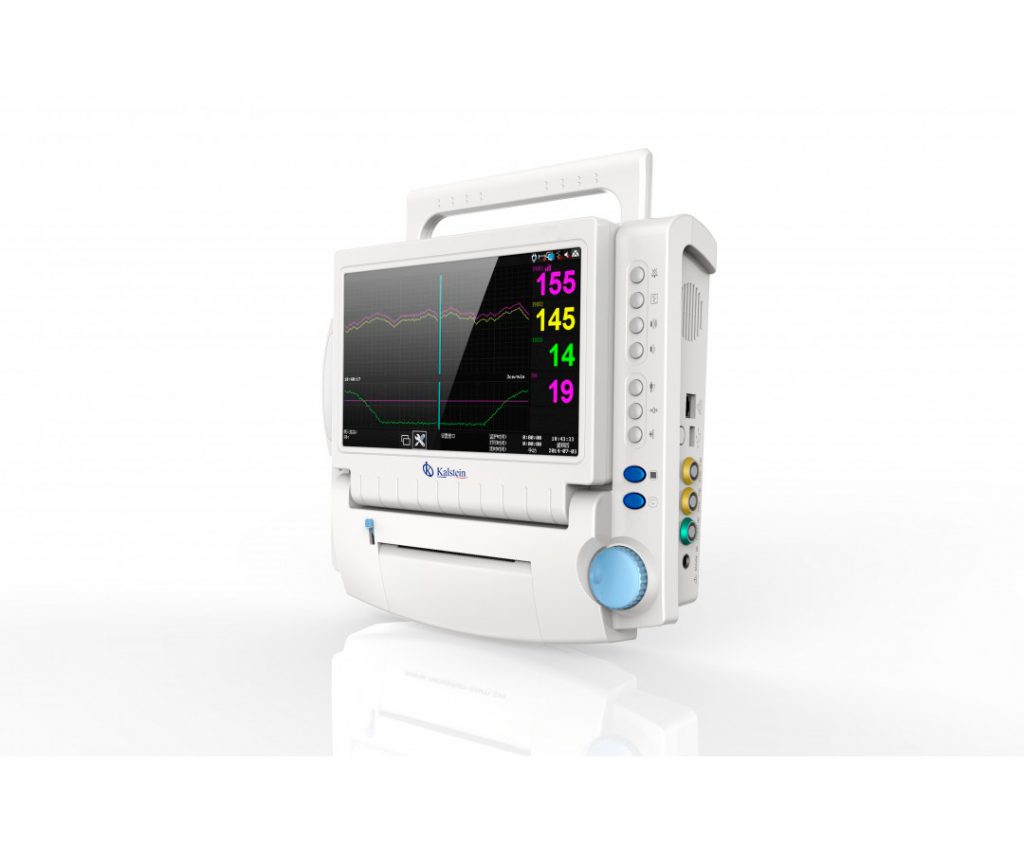According to the versatility and use of vital signs monitors existing in all health centers, for the care of patients, are applied in the perioperative processes, used basically in the operating and recovery rooms, connected to the anesthesia equipment, used to control gases inhaled by patients and good recovery.
They are also used when patients are in critical condition, precise to provide patients with high medical care, as well as in coronary, neonatal and emergency care.
In addition, the monitors used in the general room are the most common, measuring basic parameters, being more practical, as they can be mobilized from one place to another.
Types of Vital Monitors
In this particular, the types of vital signs monitors classified according to their use and patient need are shown, among them are:
- Fixed: are installed at the head of the patient and are attached to the wall through a special base designed or, where appropriate, to the anesthesia machine. For example, anesthesia monitors are focused on monitoring systems that can be damaged by lack of oxygenation or circulation such as heart, brain and kidneys.
- Adult/Pediatric: they are usually used in critically ill patients, it is applied for the type of patient who requires it through measures that are used accompanied by electrodes, bracelets, sensors, etc.
- Neonatal: this type of monitor is different, since newborns are considered special and the measurements are similar to those of adults, usually they must be measured differently.
- Hospital ward: these are applied in patients who are transferred from one area to another within the same health institution, which must have integrated batteries that remain in operation at least 2 hours, to ensure the health of the patient.
- Interhospital: this type of monitor, are those in which patients require to be transferred between units to others, in addition it is suggested to have 12V connection to connect to the ambulance.
According to the above, the proper use of vital signs monitors is of great importance, since depending on their functions, health specialists will be safer in their practices with patients who require it.
Side Effects due to Misuse of Vital Signs Monitors
The inadequate use of the monitors is associated with the lack of periodic maintenance of the equipment, causing heating of the electrodes, and causing burns or irritations in the skin of patients, especially the handling of the cables of each parameter and especially those of the ECG leads. Also, caution should be exercised in the use of pulse oximeters, since these generate high frequency signals that could affect the operation of the SpO2 sensor.
On the other hand, the alarm system on the monitors give one of the main attentions and the users of these, should know the different auditory and visual warnings, since these are classified between the different situations of the patient, given between very serious, moderate and low risk.
That is why calibrations need to be carried out in order to ensure that the measurements are reliable.
Vital Signs Monitors in Kalstein
At Kalstein, we have the best vital sign monitors, geared to meet the expectations that health specialists demand, to ensure the lives of patients, giving them confidence in their role within the operating field, such monitors have a high-resolution 12.1-inch LCD screen; 35 million long-lasting touch screen with Accutouch technology, 168 hours of graphical and tabular trends of all parameters; slim 120mm design which is a modern and economical place; the 112mm wide removable range printer can generate 7 waveforms simultaneously.
We are manufacturers and we are characterized by offering you the best prices and the best advice for your purchase. Review our catalog at HERE

